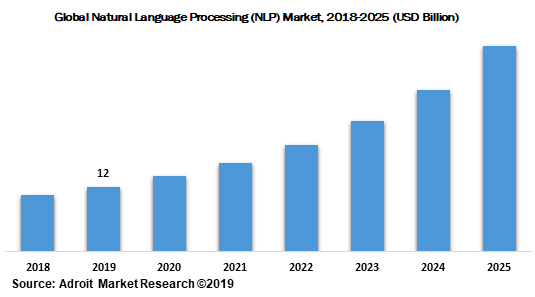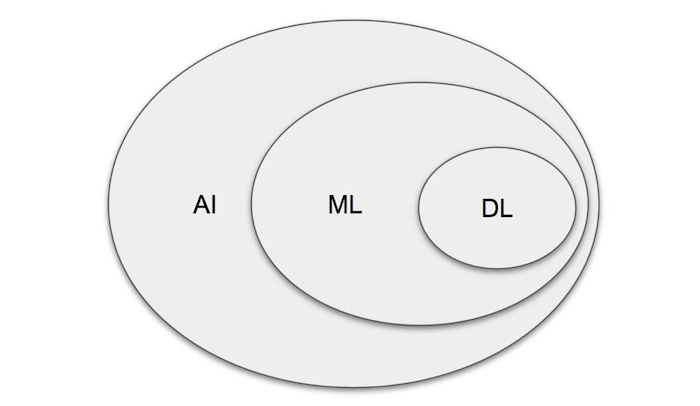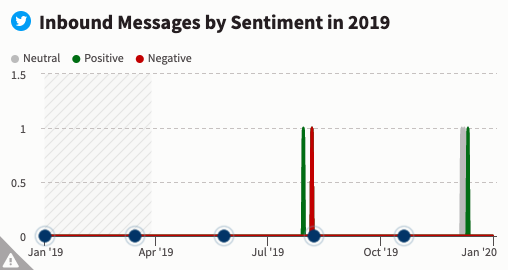How pure language processing impacts digital advertising and marketing
Natural Language Processing (NLP) sounds complicated, but its uses are simple. You may already be using NLP dozens or even hundreds of times a day.
For example:

What exactly is natural language processing? What do you need to know about it? What impact does it have on digital marketing? Let's find out.
What is natural language processing (NLP)?
Language is natural to humans, but the same is not true of computers. Understanding the context behind our words is a major challenge for them. NLP is about changing that.
Natural language processing is an area of artificial intelligence (AI) that draws on disciplines such as computer science and computational linguistics to enable computers to interpret, understand, and manipulate the often arbitrary, disorderly world of human language. Hence, the ultimate goal is to help computers understand the things we are saying in ways that add value.
As I mentioned above, NLP has a ton of use cases, many of which are fully embedded in our everyday lives. For example:
- Translation tools like Google Translate use it to make meaningful translations between languages, rather than just a literal word-by-word translation
- Word processing programs (such as Microsoft Word and Google Docs) use them to assess the grammatical accuracy of written text
- Call centers use interactive voice response applications to respond to specific customer inquiries
It is also the driving force behind search engines like Google that are getting "smarter". While keywords are still very valuable, search behavior becomes more complex as we expect search engines to understand what we mean. Consider the following search:

As humans, we understand that the seeker is Brazilian and would like to know if he needs a visa to visit the USA.
Previously, Google struggled to see the real meaning, so US citizens visiting Brazil received an unhelpful result. Thanks to advances in NLP, the company can now understand the meaning of the general word "to" in this query and provide a more relevant result.
NLP vs. AI vs. Machine learning
To a non-computer scientist, NLP sounds a lot like machine learning and AI. In reality, all three are closely related, but subtly different. To understand their relationship, you need to understand a third term: deep learning.
- Artificial intelligence includes everything we do to make machines smarter, be it a software application, a smart refrigerator or a car.
- Machine learning is a subgroup of artificial intelligence that covers everything that has to do with learning systems for yourself, without human intervention.
- Deep learning is a subset of machine learning that is specifically applied to large amounts of data.

Where does natural language processing fit in? Well, it's part of AI, but it also intersects with machine learning and deep learning.
The evolution of natural language processing
While it sounds hypermodern, natural language processing in one form or another has been around for several decades, though it has come a long way since its inception.
The history of natural language processing
- Started as machine translation in the 1950s when linguist Leon Dostert of Georgetown University used an IBM 701 computer to translate Russian into English.
- The Soviet Union soon launched its own competing machine translation project to translate English into Russian. By 1964, the USSR was the world leader in machine translation.
- In 1966 Joseph Weizenbaum programmed the first chatbot called Eliza. It was only able to have very limited conversations based mostly on rearranging user input to form questions.
- While these early examples of NLP were hampered by the need to develop complex sets of handwritten rules and parameters, the field was revolutionized by early forms of machine learning in the late 1980s.
As It Is Now: The Impact Of NLP On Digital Marketing
Marketing has always been about context. Getting into the minds of our audience to understand what they are telling us (and what not). It helps us answer questions like:
- What made you click on our ad?
- What made them bounce off the landing page?
- What made you add to the cart and then give up?
NLP gives us more context by helping us understand not only the exact words used, but also what they mean. That makes it hugely applicable to marketing. For example, voice search relies entirely on NLP because it uses complex algorithms to understand a user's commands and identify the most helpful answer.
Use of natural language processing in marketing
By now, you've probably understood how useful NLP is for marketers, but the reality is, the use cases are probably bigger than you thought! Here are some of the most relevant and fascinating.
Understand customer sentiment
Whether you're a household name or a small startup, you need to know when people are talking about you online and what they're saying.
The NLP software helps analyze social posts, reviews, and user generated content related to your brand. Hootsuite's sentiment analysis tool, which analyzes the language used in brand names on social media, is a super simple example of how this looks in practice:

There are much more complex, dedicated tools that use natural language processing to monitor sentiment across digital channels, from social media and review sites to blogs and forums. Examples include:
- MonkeyLearn
- Lexalytics
- Brandwatch
- Social seeker
- Aylien
- Social mention
- Critical mention
Sentiment analysis tools are based on one of the following three types of algorithms:
- Rule based: These use a set of manually set rules to automatically predict the sentiment of a particular social mention, review, blog post, etc.
- Automatically: Automatic algorithms rely solely on machine learning techniques to understand user sentiment.
- Hybrid: These systems combine both of the above approaches and often provide more accurate results.
Creating chatbots for customer service and lead gen.
Why do people use chatbots? As this study shows, there are a number of reasons. They have become an important customer service tool and an invaluable part of the buying process. They help people find quick answers before connecting with a real human for a more in-depth discussion.

Natural language processing is the technology that powers chatbots. Without them, they would be limited to extremely simple interactions. Sure, it's usually pretty clear that you're talking to a bot rather than a person, but this doesn't seem to be an issue for users. In fact, 54 percent would always prefer a chatbot to a human if they got a response 10 minutes faster.
Recognize trends with natural language processing
You have likely used a news aggregator or RSS feed before to get regular updates on a particular brand, product, or topic. Well, NLP goes a lot further by finding this information and then summarizing all the important points in a split second. This is invaluable when trying to identify the next big trend in your market.
Scaling content creation
Artificial intelligence can write fiction and plausible messages, so it's not surprising that it can also perform much simpler content creation tasks.
I'm not saying that you should leave your entire content marketing strategy to robots. For now, at least, it's best to leave something more creative in people's hands.
What about large-scale content creation? Let's say you have a huge ecommerce website with thousands of products. Creating descriptions for all of these individual pages would be a copywriter's worst nightmare!
This is where AI-driven content that is emphasized by processing natural language becomes of inestimable value. In fact, e-commerce giant Alibaba has already rolled out an AI copywriter that can handle all that labor-intensive writing. Apparel brands like Dickies and Esprit use it to create product descriptions in Chinese.
Use NPL for voice assistants
About a quarter of adults in the US own a smart speaker.
While we barely scratched the surface in realizing the marketing potential of these devices, there have been some standout examples. Amazon Echo users had the opportunity to explore the dystopian setting of the TV show Westworld, while Netflix promoted the second series of Stranger Things by allowing Google Home users to “chat” with the character Dustin.
Of course, as I discussed earlier, this would not be possible without natural language processing to translate speech to text, semantically match that text with the device's knowledge base, and then provide a helpful answer.
NLP Marketing Case Study: Tenable Doubles Conversion Rates
While the term "natural language processing" may be new to many of us, the technology itself has been around for a long time. So it's no wonder brands are already using it to get impressive results.
A good example is cybersecurity company Tenable. It had two major problems with its sales process:
- It was taking too long for leads to reach a sales development representative (SDR).
- SDRs had a bottleneck in contacting leads outside of office hours or at points of the day when they were busy or away from their desks
"If you don't follow them up, there's a good chance a person will say," I don't even remember filling out this form "or," I don't even remember going to your website "." noted Matt Mullin, Senior Director, Global Marketing Operations and Technology at Tenable.
By implementing a business development strategy that put smart chatbots at the center of the website, the quality and duration of conversations with prospects increased by 30% while conversion rates doubled.
Used for natural language processing in addition to marketing
NLP wasn't started as a marketing solution, and its use cases extend well beyond marketing. Here are just a few other uses for the technology:
Detect coronavirus
That's right: NLP isn't just about marketing, it's also about fighting the pandemic. Alibaba Group's research and development institute, DAMO Academy, built an NLP-based system that uses breast scans and deep data to diagnose Covid-19 infections in just 20 seconds with 96% accuracy.
Identify and analyze competitors
Every company uses some level of competitive analysis to determine strategic direction. However, in an increasingly globalized world, it is not always obvious who your biggest rivals are.
You might think you're competing with the brand later when in reality your customers are being wooed from a company on the other side of the planet.
Again, NLP has a solution. Tools like Zirra (and many others) can automatically map the competitive landscape and create a list of companies ranked according to their close relationship with your brand.
Assessment of creditworthiness
Lenders use credit scoring to understand whether a person or business is a safe bet for a loan or some other form of borrowing.
However, this is not always possible in emerging markets where important records may not be as readily available.
Now brands like Lenddo are using natural language processing to make credit decisions based on non-traditional data sources that span a candidate's entire digital footprint, from their browsing habits and social media usage to e-commerce transactions and even psychometric profiles .
Hire talent
For years, recruiters and HR teams have used technology to search resumes and cover letters for specific keywords.
NLP is a logical extension of this. Rather than fixating on certain phrases, it can analyze and extract the information that is most relevant to the role at hand.
This allows employers to automate the tedious process of searching resumes, knowing that those who can do it are up to the task.
Conclusion
Natural language processing certainly sounds advanced, but it is based on the old-fashioned marketing principle of better understanding our customers.
Rather than directly asking your audience what they think about your brand or product, what challenges they are facing, or what goals they are pursuing, NLP helps you identify their feelings, motivations and opinions based on the words they use.
NLP is another step in taking the guesswork out of our marketing decisions and reaching the right people at the right time with the right messages.
How do you plan to use local language processing in your marketing strategy?
